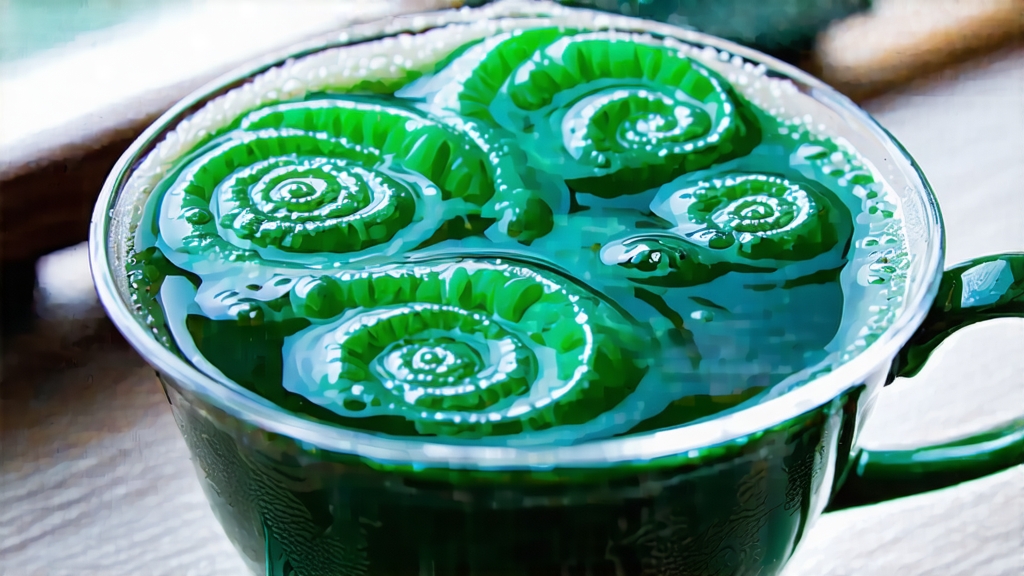
Biluochun, whose name translates literally to “Green Snail Spring,” is one of China’s ten most celebrated green teas, yet it remains a delicate secret outside serious tea circles. Grown in the mist-laced hills that rim eastern Taihu Lake in Jiangsu Province, this tea is prized for the tight spiral shape of its leaf, its downy silver-white tips, and an aroma so fragrant that the Qing-dynasty Emperor Kangxi is said to have renamed it on the spot when he first tasted it in 1699. Before that imperial moment it was known by the humbler moniker “Xia Sha Ren Xiang”—literally “scary fragrance”—because the perfume drifting from the farmers’ baskets was so arresting that villagers thought it supernatural.
The terroir is inseparable from the leaf. The Dongting Mountains—actually two islands, Dongshan and Xishan—rise from the shallow, mineral-rich waters of Taihu, creating a natural fog machine. Cool lake air meets warmer land breezes every dawn, cloaking the tea gardens in a moisture-laden mist that filters sunlight and slows photosynthesis. The result is an unusually high concentration of amino acids, especially L-theanine, which gives Biluochun its hallmark sweet-umami balance and lingering florality. The soil is a sandy loam laced with quartz and shell fragments, gifts from the lake’s prehistoric past, providing sharp drainage yet steady trace minerals. Even the fruit trees matter: peach, plum, apricot and loquat are interplanted with tea bushes, and their petals fall like snow during early spring, adding a subtle orchard note to the leaf.
Although all Biluochun comes from this micro-region, two distinct styles have emerged. “Wild Mountain” Biluochun is picked from seed-propagated bushes that grow on precipitous, inaccessible cliffs; the leaf is smaller, more silvery, and delivers a brisk marine note reminiscent of nori. “Garden” Biluochun, cultivated in terraced plots closer to the shoreline, yields a rounder, nuttier cup with a hint of roasted chestnut. Purists further divide the garden category into Mingqian (picked before the Qingming festival in early April) and Yuqian (picked before the Grain Rain in late April). Mingqian leaf is the most coveted: one kilogram requires roughly seventy thousand buds, all plucked at dawn when the dew is still intact.
The crafting of Biluochun is a race against time and oxidation. Within minutes of plucking, the buds are spread in bamboo trays no thicker than two centimeters and left to wither for precisely thirty to forty minutes, just long enough for the grassy bite to mellow. Next comes the kill-green stage, performed in woks heated to 180 °C. A master tea maker tosses the leaves with a rhythmic clapping motion—fingers splayed, palms cupped—so that each bud touches the metal for only two seconds before being lifted into cooler air. This “hand-firing” lasts six minutes and demands an intuitive reading of humidity, leaf texture, and aroma. When the leaf turns jade green and emits a cooked-pea fragrance, the temperature is dropped to 80 °C and the true shaping begins. Using a spiral pressing motion akin to kneading dough, the maker coaxes the bud around his index finger, forming the signature snail curl while driving out residual moisture. The entire process—from tree to finished tea—must be completed within four hours, after which the leaf is rested for twenty-four hours and then given a gentle charcoal bake at 60 °C to fix the aroma.
To unlock the tea’s full narrative, water is everything. Use a tall cylindrical glass—ideally 250 ml—so the leaves can dance vertically. Pre-warm the glass, then add three grams of tea (about a heaping teaspoon). Bring freshly drawn water to 75 °C; hotter temperatures scorch the downy tips and flatten the bouquet. Pour the water along the inner wall of the glass to avoid direct impact on the leaf. Within seconds the spirals begin to unfurl, releasing a pale jade liquor and an aroma that moves through stages: first sweet pea, then white peach, finally a faint marine breeze. Steep for sixty seconds, sip, and re-infuse up to four times, adding fifteen seconds each steep. The third infusion is often considered the most balanced, when the amino acids and catechins reach perfect equilibrium.
Professional cupping follows a stricter choreography. Five grams of leaf are placed in a 150 ml porcelain gaiwan. Water at